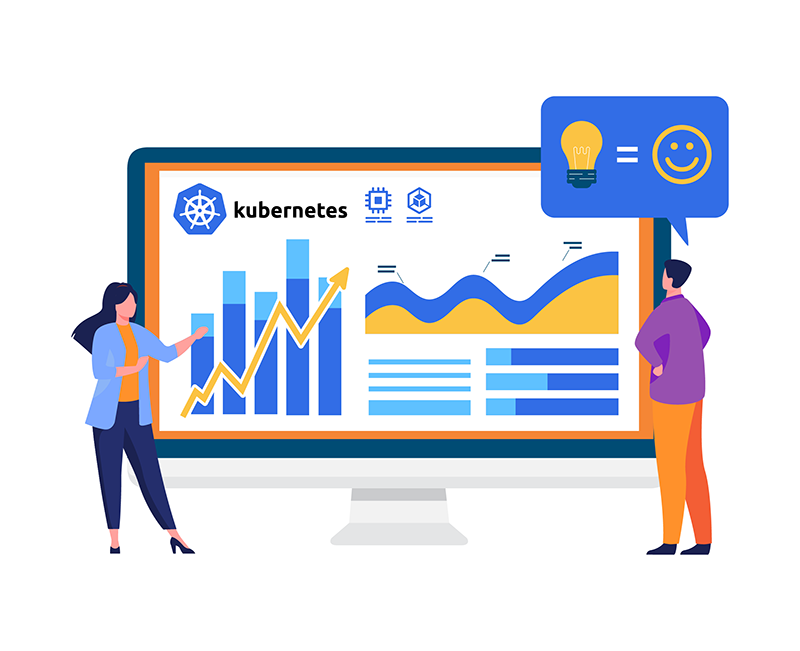In the dynamic landscape of cloud computing, Kubernetes has emerged as a powerful tool for managing containerized applications. However, optimizing the costs of running Kubernetes clusters requires more than just number crunching. It demands a strategic approach that fosters collaboration, embraces best practices, and empowers organizations to make informed decisions. This article will explore the fundamental principles and strategies for mastering Kubernetes cost management and maximizing savings.

Unveiling the essentials for optimal savings
Cultivating a cost-conscious culture
To drive cost optimization efforts, organizations must instill a culture of cost-consciousness throughout their teams. This involves equipping developers and finance professionals with the necessary skills and tools to manage Kubernetes costs effectively. By integrating Kubernetes cost management into existing cloud cost management initiatives, organizations can create a comprehensive approach to controlling expenses. This approach promotes a sense of ownership and accountability across teams, leading to more efficient resource utilization.
Embracing cross-functional collaboration
Successful Kubernetes cost management requires collaboration between different teams, particularly engineering, and finance. Developers may not possess expertise in cost optimization, but they play a vital role in identifying areas where costs can be reduced. Finance professionals, on the other hand, question the escalating costs of cloud services. By implementing a robust cost management tool, organizations can empower developers to make minor adjustments in Kubernetes or container configurations, thus optimizing costs. This collaboration also enables effective communication and alignment between developers and finance personnel, fostering a shared understanding of cost-saving objectives.
Establishing documentation and training initiatives
Documentation and education are crucial for organizations to succeed in Kubernetes cost management. Organizations ensure consistency and promote knowledge sharing by documenting the methodologies and tools used to calculate Kubernetes costs. Internal training sessions should be conducted to educate employees on cost management practices, providing a comprehensive understanding of the principles and techniques employed. Additionally, creating concise “cheat sheets” for cost calculation and developing job aids and training materials help stakeholders effectively interact with cost management metrics and reports, regardless of their level of expertise.
Optimizing resource utilization
Efficient resource utilization is at the core of Kubernetes cost management. Organizations should analyze resource utilization patterns to identify and optimize inefficient deployments. Scaling strategies, such as vertical and horizontal scaling, should be implemented to adjust resources based on workload demands dynamically. Leveraging auto-scaling and horizontal pod autoscaling can ensure resources are allocated efficiently. Regular monitoring and fine-tuning of resource allocation based on actual needs are pivotal in driving cost savings.
Leveraging cost allocation and tagging
Organizations should leverage cost allocation and tagging mechanisms to gain visibility and control over Kubernetes costs. Cost allocation tags can assign costs to specific teams, projects, or departments, enabling accurate cost attribution. Resource tagging helps track and categorize resources, facilitating better cost analysis and optimization. Cloud provider tools or third-party solutions can automate cost allocation and tagging processes, simplifying the management of Kubernetes costs.
Effective strategies for Kubernetes cost management
Developing a successful Kubernetes cost management strategy can be challenging, especially for organizations with limited expertise in Kubernetes. However, organizations can confidently proceed by comprehending the fundamentals of calculating Kubernetes-related costs and establishing robust tracking mechanisms. Let’s look at a basic framework for Kubernetes cost management and outline key strategies to optimize expenses and drive efficiency.
Right-sizing your Kubernetes environment for FinOps
- Aligning resources with organizational objectives: Right-size your Kubernetes environment by aligning the number and types of resources with your organization’s specific roadmap and objectives.
- Effective resource management: Actively manage resource utilization to control costs and ensure standby resources are available for scaling and failover purposes.
- Pod-level resource optimization: Set pod requests and limits to regulate resource usage, optimizing resource allocation across containers within a pod.
Leveraging Kubernetes labels for cost tracking
- Categorizing Kubernetes objects: Encourage the use of Kubernetes labels to identify and categorize Kubernetes objects, allowing for effective segmentation into relevant groups.
- Granular cost allocation: Implement appropriate tags to gain visibility into pod-level resource usage across different applications and Kubernetes environments, facilitating accurate cost allocation and analysis.
Integrating cost monitoring and alerting into daily operations
- Automated detection and alerting: Empower developers with tools and strategies that automatically detect CPU and memory requests exceeding current usage, helping to avoid unnecessary costs.
- Streamlined reporting and collaboration: Enhance the readability and design of cost reports, breaking down Kubernetes costs based on deployment, service, and namespace labels to facilitate effective communication and collaboration between DevOps and finance teams.
Maximizing the potential of Kubernetes cost management tools
- Realistic expectations: Understand that Kubernetes cost management tools involve a learning curve and set realistic expectations for immediate cost savings.
- Identifying inefficiencies and cost-reduction opportunities: Leverage cost management tools to identify inefficiencies, waste, and potential cost-reduction opportunities within your Kubernetes environment.
- Continuous improvement: Over time, optimize costs and achieve significant savings by effectively utilizing Kubernetes cost management tools.
In conclusion
By implementing the strategies outlined in this framework, organizations can establish a solid foundation for effective Kubernetes cost management, especially if efficient cost management tools, like OptScale, are used for this purpose. Right-sizing the Kubernetes environment, leveraging labels for cost tracking, integrating cost monitoring into daily operations, and utilizing cost management tools will pave the way for efficient cost optimization and resource efficiency. As organizations navigate the complex landscape of Kubernetes cost management, continuous improvement, and a proactive approach will ensure long-term success in optimizing expenses.



